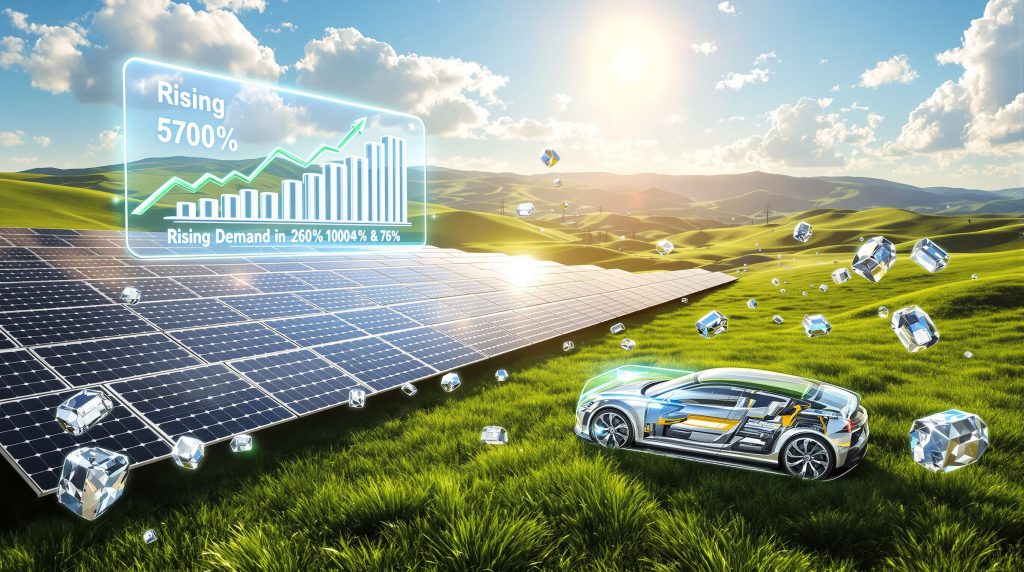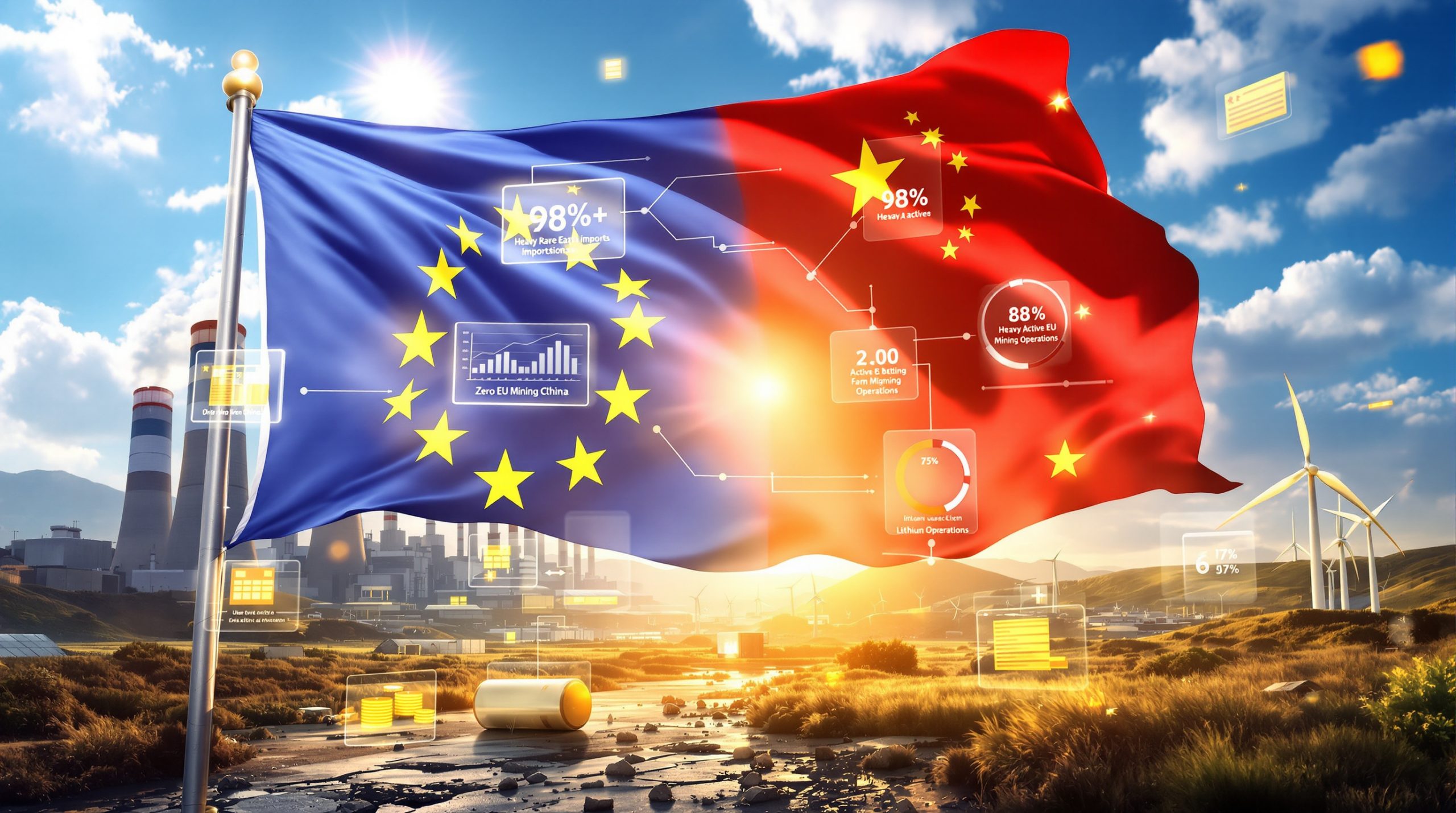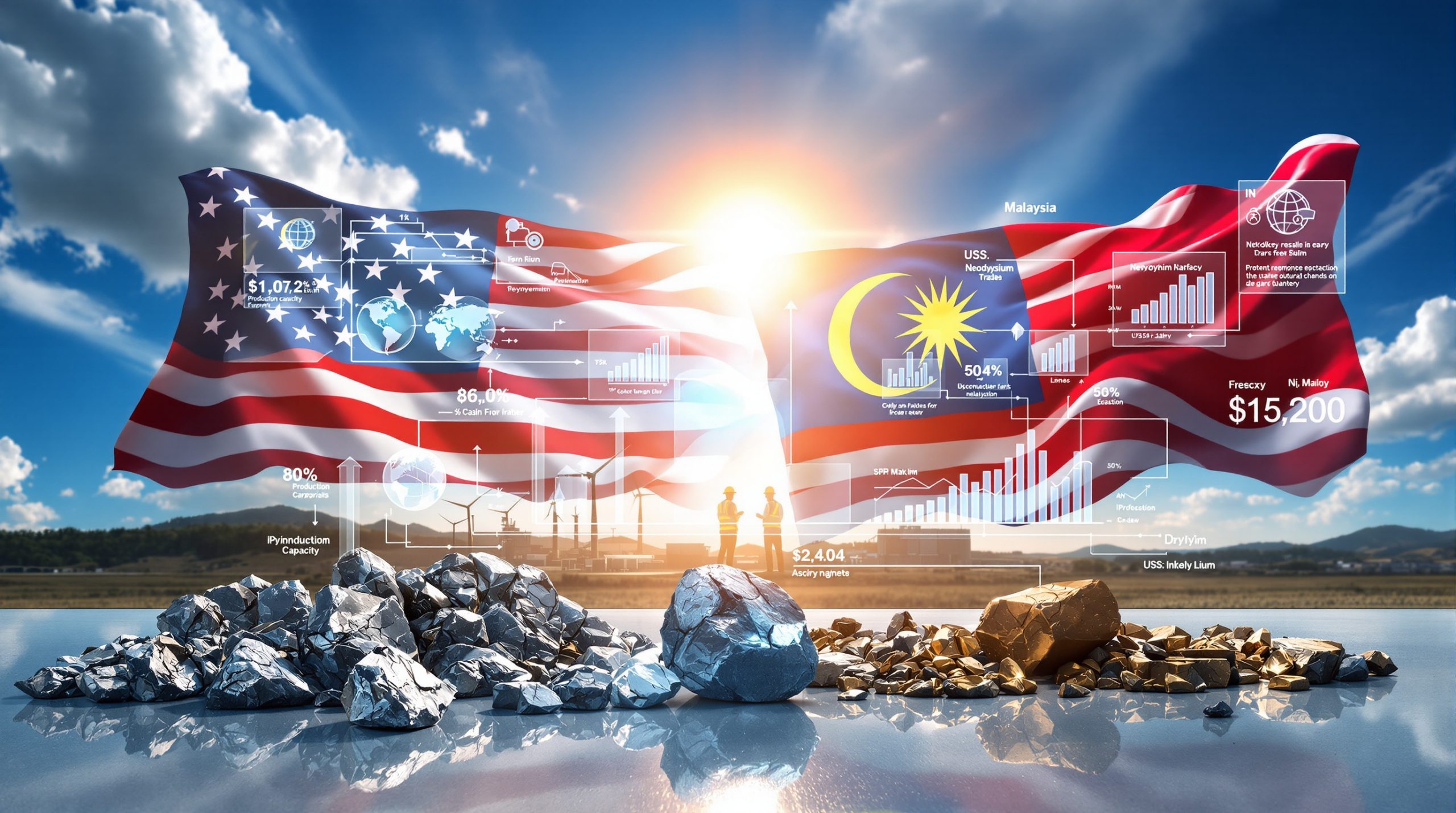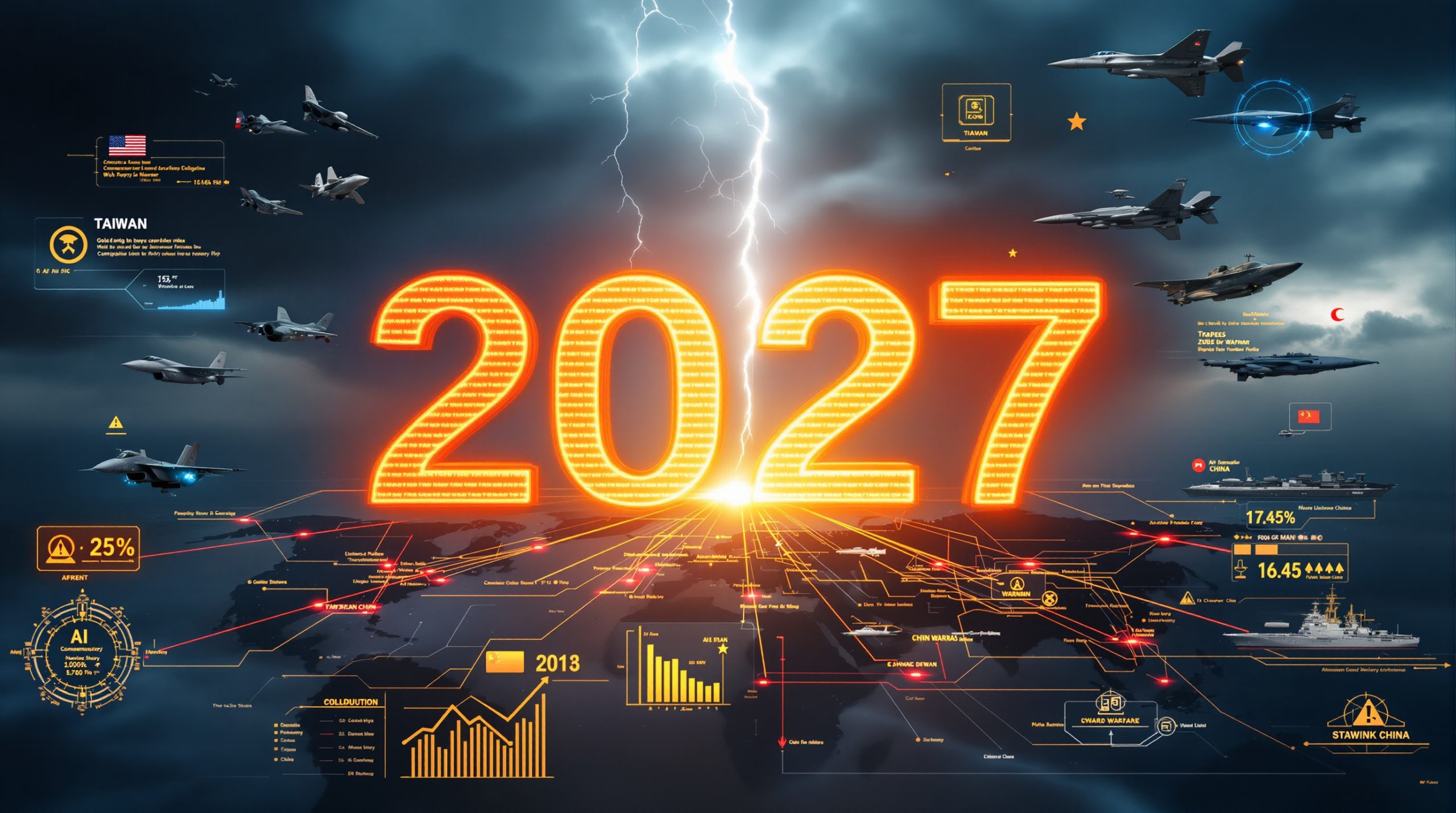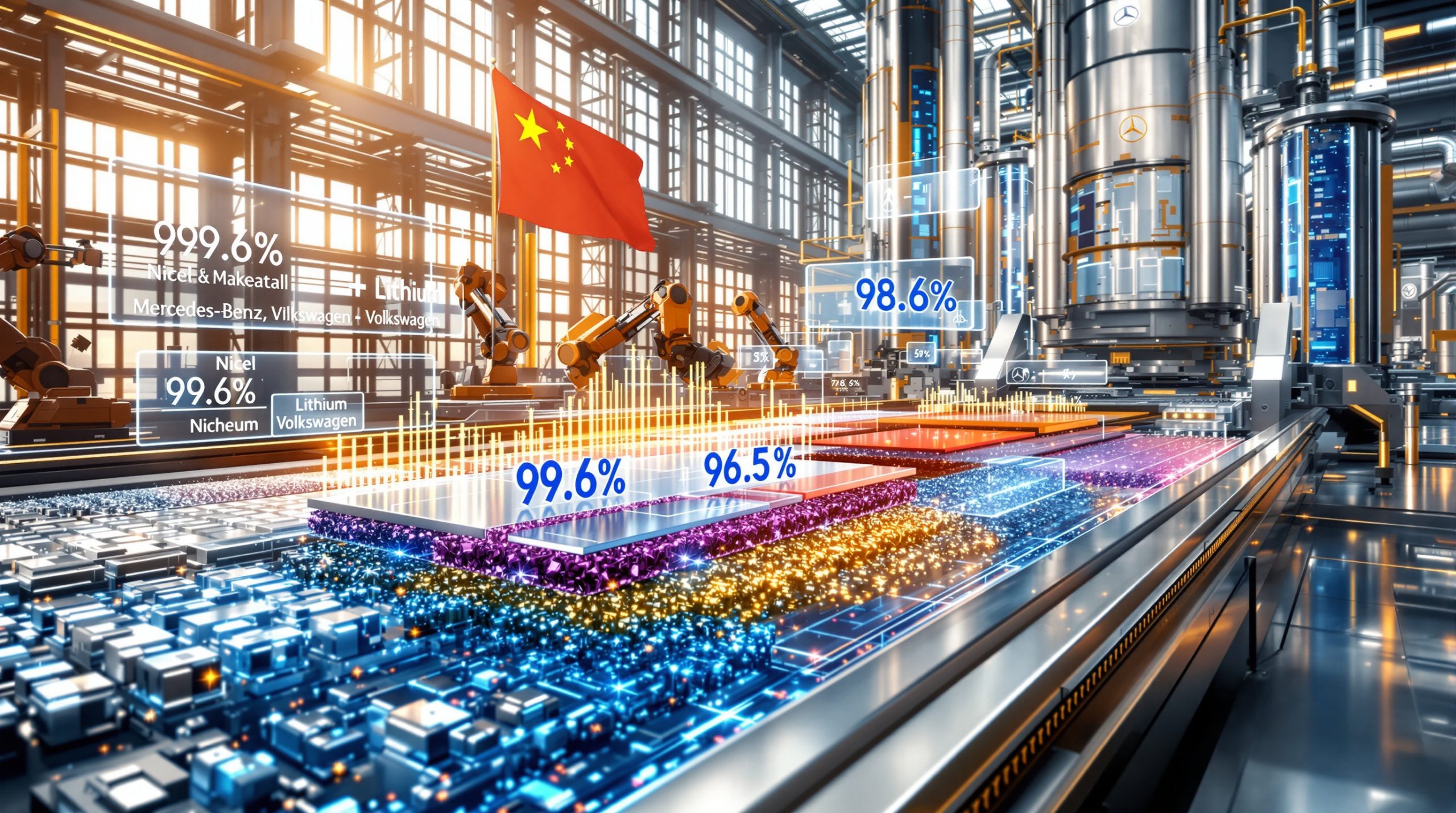Green Technology's Industrial Silver Revolution
The renewable energy transition has transformed silver from merely a store of value into a mission-critical industrial commodity. Rising silver demand in green technology is creating unprecedented market dynamics as the metal's exceptional electrical conductivity properties make it irreplaceable in emerging clean technologies.
This transformation is creating a fundamental supply-demand imbalance that extends far beyond traditional precious metal cycles. Between 2020 and 2023, the solar industry alone accounted for 91% of silver's supply growth, demonstrating how renewable energy has become the primary driver of silver consumption globally.
The Science Behind Silver's Green Technology Dominance
Silver possesses the highest thermal and electrical conductivity of all elements, making it essential for applications where energy efficiency directly impacts performance and profitability. This characteristic becomes crucial in green technologies where even minimal energy losses can significantly affect overall system effectiveness.
In photovoltaic cells, silver serves as the conductive medium that captures electrons generated when sunlight strikes silicon surfaces. Despite ongoing research into alternative materials, no substitute has matched silver's combination of conductivity, durability, and cost-effectiveness at industrial scales.
Market Transformation Statistics
The shift toward industrial applications has fundamentally altered silver's demand profile. Solar panel production consumed 161 million ounces of silver in 2023, representing a dramatic increase from previous decades when jewellery and investment dominated consumption patterns.
Electric vehicles require approximately one troy ounce of silver per vehicle, roughly double the amount used in traditional internal combustion engines. This multiplier effect is creating substantial demand as global EV production scales toward projected targets of 18 million battery electric vehicles annually by 2025.
Solar Manufacturing's Unprecedented Silver Consumption
Photovoltaic technology represents the largest single driver of rising silver demand in green technology, fundamentally altering global consumption dynamics. The solar industry's rapid expansion has created an insatiable appetite for silver that shows no signs of slowing.
Solar installations experienced remarkable growth in silver consumption, with demand increasing by 10% in 2021, 28% in 2022, and an additional 15% forecast for 2023. These growth rates far exceed traditional industrial applications and highlight the sector's outsized impact on global silver markets.
Manufacturing Process Requirements
Solar cell manufacturing requires silver paste application across the entire surface of photovoltaic cells to create conductive pathways. This process cannot be significantly reduced without compromising electrical efficiency, creating a floor for per-panel silver consumption even as manufacturing techniques improve.
Each solar installation requires substantial silver content across multiple components:
- Conductive grids for electron collection
- Interconnection systems between cells
- Junction boxes and electrical connections
- Inverter components for power conversion
Production Volume Impact Analysis
Global solar capacity additions have exceeded 200 gigawatts annually since 2022, driving unprecedented silver consumption. Even with ongoing efforts to reduce silver content per panel through improved paste formulations and thinner applications, total consumption continues rising due to massive installation volumes.
The solar industry's silver intensity remains significant, with each megawatt of installed capacity requiring approximately 2,000-3,000 ounces of silver depending on panel efficiency and technology type. This relationship creates predictable demand growth as renewable energy targets escalate globally.
Electric Vehicle Revolution's Silver Multiplier Effect
Transportation electrification represents another major catalyst for rising silver demand in green technology, with electric vehicles requiring substantially more silver than traditional automobiles across multiple system components. Furthermore, the electrification trend extends beyond individual vehicles to encompass entire transportation infrastructure, creating multiplicative effects that amplify silver consumption throughout the automotive sector.
Component-Level Silver Applications
Electric vehicles utilise silver across numerous critical systems:
- Battery management systems for thermal regulation and charge control
- Power electronics for energy conversion and motor control
- Charging connectors and electrical interfaces
- Regenerative braking systems for energy recovery
- Safety systems and automated driving sensors
Infrastructure Multiplication Effects
EV charging networks create additional silver demand beyond the vehicles themselves. Full electrification of transportation infrastructure and supporting EV charging systems could consume an additional 100 million ounces of silver by 2030.
Fast-charging stations require approximately 15-25 ounces of silver per installation for electrical components, power conversion systems, and grid connections. With global charging networks expanding rapidly to support EV adoption, this infrastructure demand represents a significant additional consumption stream.
Regional Demand Dynamics
Electric vehicle adoption varies significantly by region, creating concentrated demand hotspots for silver consumption. China leads global EV production and adoption, followed by Europe and North America, with emerging markets beginning to contribute meaningfully to overall demand.
Policy initiatives supporting EV adoption, including purchase incentives, infrastructure investment, and internal combustion engine phase-out timelines, are accelerating silver consumption across multiple geographic regions simultaneously.
Emerging Green Technologies Expanding Silver Applications
Beyond solar panels and electric vehicles, numerous emerging clean technologies are creating additional demand streams for silver, diversifying the metal's industrial applications and strengthening long-term consumption trends.
Battery Storage and Grid Modernisation
Large-scale battery storage systems require silver for power electronics, inverters, and grid-tie equipment. As renewable energy sources require storage solutions to manage intermittency, these systems are creating substantial new silver demand.
Smart grid technologies utilise silver in:
- Advanced metering infrastructure
- Grid automation and control systems
- Power quality management equipment
- Renewable energy integration hardware
Hydrogen Fuel Cell Development
Hydrogen fuel cells use silver as a catalyst component, supporting both transportation and stationary power applications. As hydrogen infrastructure develops globally, this sector could consume an additional 20-30 million ounces annually by 2030.
Fuel cell applications span multiple sectors including heavy transportation, industrial processes, and backup power systems, creating diverse demand sources that reduce dependence on any single application.
Next-Generation Battery Technologies
Advanced battery systems, including solid-state batteries and next-generation lithium-ion technologies, are incorporating silver for improved conductivity and thermal management. These applications could add 50-75 million ounces to annual demand by 2030.
"Emerging battery technologies represent a potential step-change in silver consumption, as next-generation systems require enhanced conductivity solutions that currently favour silver-based components over alternative materials."
Supply Constraints Creating Market Pressure
While demand surges across green technology sectors, silver supply faces structural challenges that are creating persistent market tightness and supporting higher price levels over extended periods. Moreover, the silver market squeeze dynamic intensifies these constraints.
Global silver production has plateaued around 830-850 million ounces annually, with limited new mine development due to extended permitting timelines, environmental regulations, and the metal's dependence on base metal mining operations.
Mining Production Limitations
Silver production faces unique challenges compared to other precious metals:
- Base metal dependence: Approximately 70% of silver production comes as a byproduct of copper, zinc, and lead mining
- Declining ore grades at existing operations reduce productivity over time
- Environmental regulations in key producing regions constrain expansion
- Extended development timelines for new mining projects limit supply responsiveness
Secondary Supply Constraints
Recycled silver provides approximately 180-200 million ounces annually to global supply, but recovery from green technology applications faces significant challenges due to product design and lifecycle factors.
Table: Silver Recycling Challenges by Application
| Application | Product Lifecycle | Recycling Rate | Recovery Challenges |
|---|---|---|---|
| Solar Panels | 20-25 years | 15-20% | Complex material separation |
| EV Components | 10-15 years | 25-35% | Geographic dispersion |
| Electronics | 3-7 years | 45-55% | Small quantities per unit |
| Grid Infrastructure | 15-30 years | 20-30% | Remote installations |
Supply-Demand Balance Projections
Table: Global Silver Balance (Million Ounces)
| Year | Mine Supply | Industrial Demand | Investment Demand | Market Balance |
|---|---|---|---|---|
| 2022 | 835 | 542 | 215 | +78 |
| 2023 | 840 | 578 | 185 | +77 |
| 2024E | 845 | 615 | 195 | +35 |
| 2025F | 850 | 665 | 210 | -25 |
| 2026F | 855 | 720 | 225 | -90 |
Investment Implications of Structural Demand Shift
The transformation of silver from primarily an investment vehicle to an essential industrial commodity is creating new market dynamics and investment opportunities that differ from traditional precious metal cycles. Consequently, the silver squeeze movement has gained significant traction among investors.
This structural shift provides several key investment considerations for both institutional and retail investors seeking exposure to the green technology revolution through silver markets.
Price Volatility and Industrial Floor
Silver's dual role creates unique price characteristics that distinguish it from other precious metals. Industrial demand provides a fundamental floor for prices during economic downturns, while investment demand can create significant upside during periods of economic uncertainty.
The growing proportion of industrial consumption reduces price sensitivity to investment flows, potentially creating more stable long-term price trends as green technology applications expand.
Investment Vehicle Performance
Multiple investment vehicles provide exposure to rising silver demand in green technology:
- Physical silver offers direct exposure with storage considerations
- Silver ETFs provide liquid market access without physical holdings
- Mining company equities offer leveraged exposure with operational risks
- Green technology funds with silver exposure capture broader sector trends
Each option provides different risk-return profiles and varying exposure to industrial versus investment demand dynamics. Furthermore, effective silver pricing strategies become crucial for optimising investment returns.
Portfolio Diversification Benefits
Silver's correlation with both precious metals and industrial commodities provides unique diversification benefits, particularly as green technology demand creates more predictable long-term consumption patterns compared to cyclical industrial applications.
The metal's essential role in renewable energy infrastructure creates defensive characteristics during economic transitions toward sustainable energy systems. Additionally, understanding gold-silver ratio analysis helps investors make informed allocation decisions.
Future Technology Developments and Silver Demand
Emerging technologies and ongoing innovation in green energy sectors suggest silver demand will continue expanding, with new applications potentially offsetting efficiency improvements in existing uses. In addition, the potential impact of silver tariffs impact on pricing dynamics must be considered.
Research and development across multiple technology sectors indicate silver's importance will grow rather than diminish as green technologies mature and scale globally.
Next-Generation Solar Technologies
Advanced photovoltaic technologies may actually increase silver intensity despite efficiency improvements. Perovskite-silicon tandem cells and concentrated solar power systems require enhanced conductivity solutions that favour silver applications.
Third-generation solar technologies under development, including organic photovoltaics and quantum dot applications, are exploring silver-enhanced designs that could maintain or increase per-unit consumption levels.
Advanced Battery System Integration
Table: Silver Content in Emerging Battery Technologies
| Battery Type | Silver Content (g/kWh) | Commercial Timeline | Demand Impact vs Current |
|---|---|---|---|
| Enhanced Li-Ion | 0.8-1.5 | 2025-2027 | +60-150% |
| Solid-State | 1.5-2.5 | 2026-2028 | +150-250% |
| Metal-Air | 2.0-3.0 | 2028-2030 | +200-300% |
| Lithium-Sulfur | 1.2-2.0 | 2027-2029 | +100-200% |
Quantum and Advanced Computing Applications
Quantum computing and advanced semiconductor applications represent entirely new demand categories for silver. These emerging technologies could consume 10-15 million ounces annually by 2030 as quantum systems scale toward commercial applications.
Advanced computing requirements for artificial intelligence and machine learning systems also favour silver-enhanced components for thermal management and electrical performance optimisation.
Grid Infrastructure Evolution
Modern electrical grid systems require enhanced conductivity solutions for renewable energy integration, energy storage systems, and smart grid technologies. These infrastructure applications represent long-term, stable demand sources that complement cyclical technology applications.
Future Silver Demand Drivers:
- Advanced power electronics for grid management
- Energy storage system interconnections
- 5G and 6G telecommunications infrastructure
- Autonomous vehicle sensor systems
- Industrial automation and robotics
Market Psychology and Investment Strategy Considerations
Rising silver demand in green technology is creating new investment psychology dynamics as market participants recognise the metal's essential role in the energy transition. This shift is attracting both industrial buyers seeking supply security and financial investors recognising structural demand trends.
Traditional silver investing focused on monetary metals and store-of-value characteristics. The industrial transformation is attracting technology-focused investors who view silver exposure as participation in renewable energy and electrification trends.
Supply Security and Strategic Stockpiling
Green technology manufacturers are increasingly considering silver supply security as production scales accelerate. This industrial stockpiling behaviour differs from traditional investment demand and creates additional price support during supply constraints.
Strategic reserve policies by governments supporting renewable energy initiatives may also contribute to official sector silver accumulation, adding another demand layer beyond traditional central bank precious metals policies.
Geological Factors and Mining Constraints
Silver ore grades have declined consistently over decades, with average global grades falling from 12-15 grams per tonne in the 1990s to current levels around 8-10 grams per tonne. This grade decline increases production costs and limits supply elasticity.
Primary silver mines represent less than 30% of global production, with the majority coming from polymetallic deposits where silver extraction depends on base metal economics. This geological reality constrains supply responsiveness to price signals.
Regulatory and Environmental Considerations
Environmental regulations affecting mining operations vary significantly by jurisdiction, creating supply concentration risks in regions with favourable regulatory frameworks. Permitting timelines for new mining projects have extended substantially, often requiring 7-10 years from discovery to production.
Green technology applications paradoxically increase demand for a metal whose extraction faces increasing environmental scrutiny, creating potential supply-demand tensions as sustainability priorities compete with resource needs.
Silver's Strategic Position in Global Energy Transition
The convergence of renewable energy expansion, transportation electrification, and grid modernisation has positioned silver as an indispensable material for the global clean energy transition. Unlike cyclical industrial demand patterns, green technology applications create sustained consumption growth that fundamentally reshapes silver's market dynamics.
Supply constraints combined with accelerating demand from solar installations, electric vehicles, and emerging technologies suggest a structural shift toward persistently higher silver prices and increased market volatility. This transformation creates both significant opportunities and risks for investors as silver evolves from a traditional store of value into essential energy infrastructure.
Furthermore, research indicates that green energy's role in increasing demand continues to accelerate across multiple sectors. Additionally, green technology applications demonstrate the metal's increasing importance in sustainable energy solutions.
Disclaimer: This analysis contains forward-looking statements regarding silver demand and pricing. Future market conditions may differ materially from projections based on technological developments, regulatory changes, and economic factors beyond current forecasting capabilities.
The metal's unique properties ensure continued relevance in green technologies, while supply limitations create persistent market tightness. As the clean energy transition accelerates globally, silver's industrial demand profile will likely become the primary determinant of long-term price trends and investment attractiveness.
Rising silver demand in green technology represents a fundamental shift from traditional precious metals investing toward strategic materials exposure. Investors considering silver positions should evaluate both the opportunities presented by structural demand growth and the risks associated with supply constraints and price volatility in this evolving market environment.
The information presented is for educational purposes and should not be considered investment advice. Market conditions and silver demand patterns may change based on technological developments and economic factors.
Ready to Capitalise on Silver's Green Technology Revolution?
Discovery Alert's proprietary Discovery IQ model instantly identifies emerging opportunities in ASX-listed silver and precious metals companies, delivering real-time alerts on significant mineral discoveries that could benefit from this unprecedented industrial demand surge. With silver's transformation into an essential green technology commodity creating new investment dynamics, begin your 30-day free trial today to position yourself ahead of the market and gain actionable insights into the next generation of mineral discovery opportunities.
